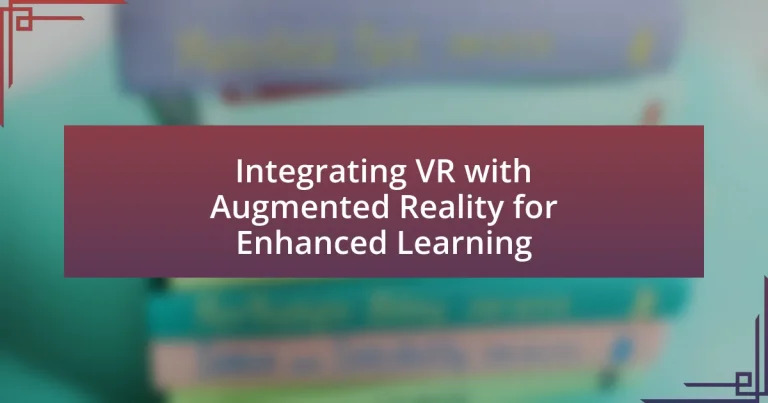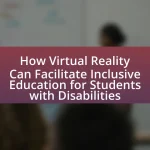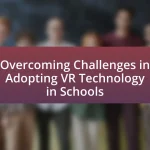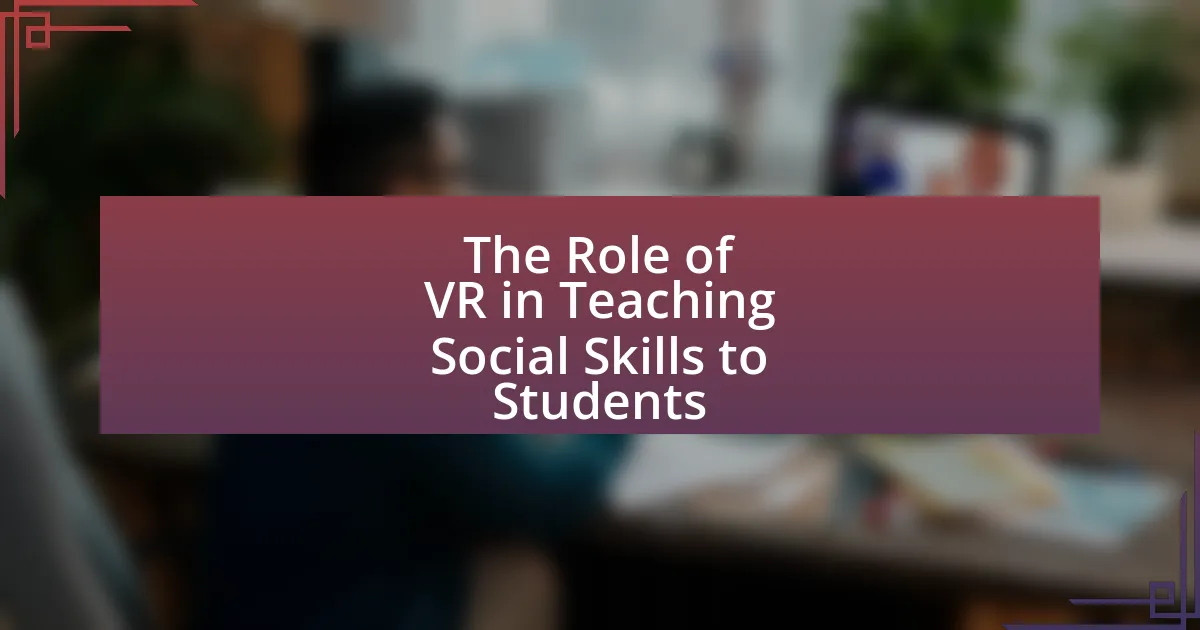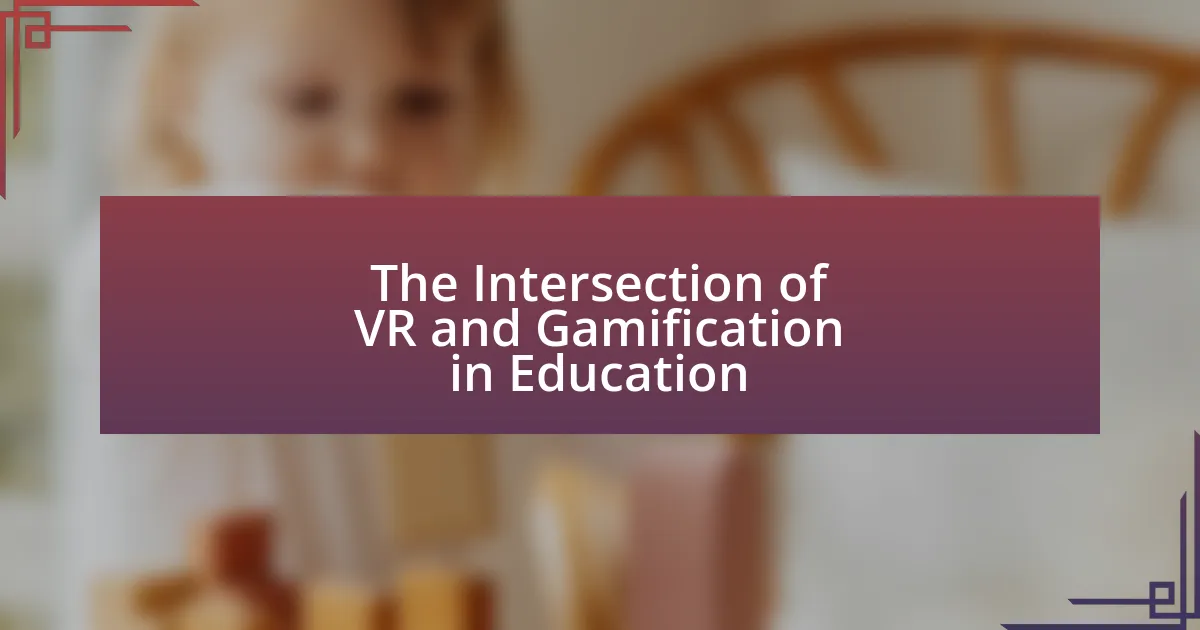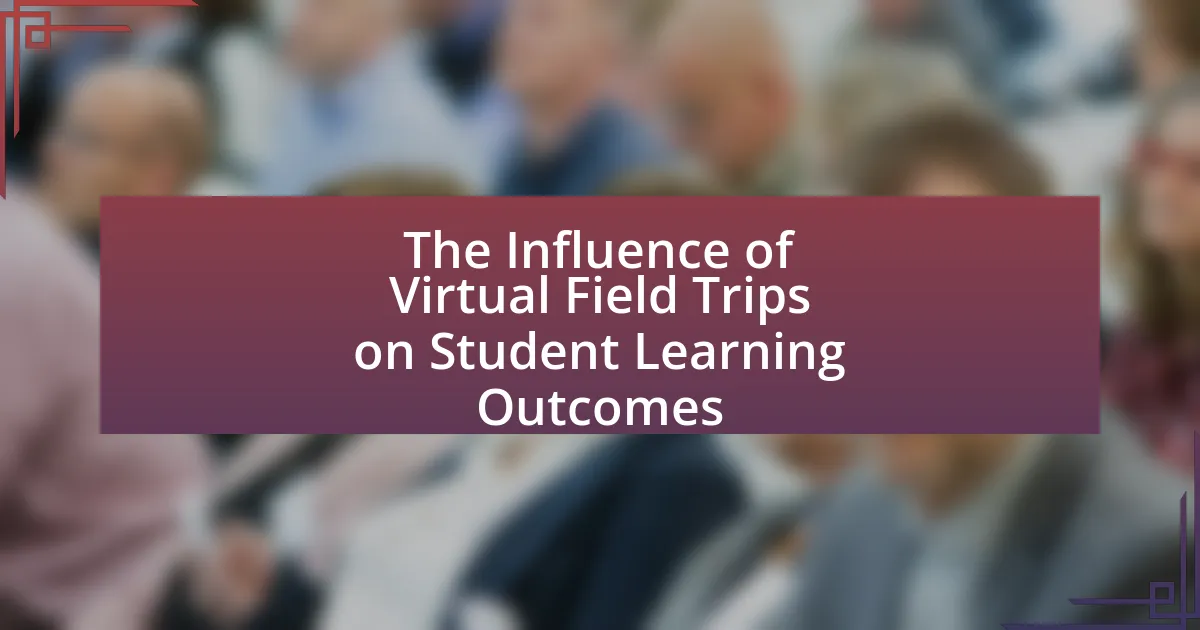Integrating Virtual Reality (VR) with Augmented Reality (AR) enhances learning by combining immersive VR environments with interactive AR elements, resulting in improved student engagement and retention. This article explores how VR and AR complement each other in educational settings, highlighting their unique advantages and key features that foster experiential learning. It also addresses the challenges of integration, including technical barriers and cost issues, while providing strategies for effective implementation and assessment. Additionally, successful case studies and future trends in VR and AR integration are discussed, emphasizing the evolving role of educators in leveraging these technologies for diverse learning styles.
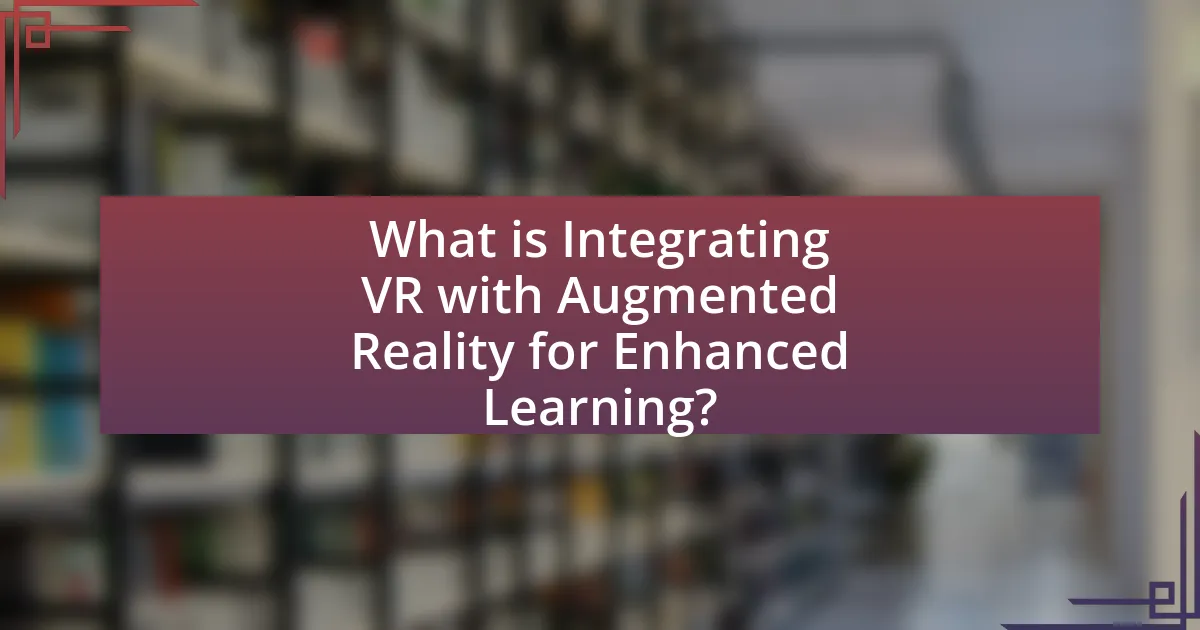
What is Integrating VR with Augmented Reality for Enhanced Learning?
Integrating Virtual Reality (VR) with Augmented Reality (AR) for enhanced learning involves combining immersive VR environments with interactive AR elements to create a comprehensive educational experience. This integration allows learners to engage with digital content in a more interactive and contextual manner, enhancing understanding and retention of information. Research indicates that such immersive learning environments can improve student engagement and motivation, as evidenced by a study published in the Journal of Educational Technology & Society, which found that students using VR and AR together scored significantly higher on assessments compared to traditional learning methods.
How do VR and AR technologies complement each other in educational settings?
VR and AR technologies complement each other in educational settings by providing immersive and interactive learning experiences that enhance student engagement and understanding. Virtual Reality (VR) creates fully immersive environments where learners can explore complex concepts, such as anatomy or historical events, in a simulated space. Augmented Reality (AR), on the other hand, overlays digital information onto the real world, allowing students to interact with 3D models and visual aids in their physical environment. This combination enables a multi-faceted approach to learning; for instance, students can use AR to visualize a scientific process while simultaneously experiencing a VR simulation of that process in action. Research indicates that integrating VR and AR can lead to improved retention rates and deeper comprehension, as evidenced by a study published in the Journal of Educational Technology & Society, which found that students using both technologies scored significantly higher on assessments compared to those using traditional methods.
What are the key features of VR that enhance learning experiences?
The key features of VR that enhance learning experiences include immersive environments, interactive simulations, and experiential learning opportunities. Immersive environments allow learners to engage with content in a three-dimensional space, which has been shown to improve retention rates by up to 75% compared to traditional learning methods. Interactive simulations enable learners to practice skills in a safe setting, fostering deeper understanding through hands-on experience. Additionally, experiential learning opportunities provided by VR facilitate real-world applications of knowledge, making learning more relevant and impactful. Studies, such as those conducted by the University of Maryland, have demonstrated that VR can significantly enhance spatial awareness and problem-solving skills, further validating its effectiveness in educational contexts.
What are the unique advantages of AR in educational contexts?
Augmented Reality (AR) offers unique advantages in educational contexts by enhancing engagement, improving retention, and facilitating experiential learning. AR immerses students in interactive environments, allowing them to visualize complex concepts, such as anatomy or physics, in a tangible way. Research indicates that students using AR technology demonstrate a 30% increase in retention rates compared to traditional learning methods, as reported in a study by Wu et al. (2013) in the journal “Educational Technology & Society.” Additionally, AR fosters collaboration among students, as they can work together on projects in a shared augmented space, promoting teamwork and communication skills. These advantages position AR as a transformative tool in modern education, making learning more effective and enjoyable.
Why is the integration of VR and AR important for modern education?
The integration of VR and AR is important for modern education because it enhances experiential learning and engagement. By immersing students in interactive environments, VR allows for simulations of real-world scenarios, while AR overlays digital information onto the physical world, facilitating a deeper understanding of complex concepts. Research indicates that students using VR and AR technologies show improved retention rates and higher motivation levels, as evidenced by a study published in the Journal of Educational Technology & Society, which found that 70% of students reported increased interest in subjects when using these technologies. This integration not only caters to diverse learning styles but also prepares students for a technology-driven future.
How does this integration address different learning styles?
This integration of Virtual Reality (VR) and Augmented Reality (AR) effectively addresses different learning styles by providing immersive and interactive experiences tailored to visual, auditory, and kinesthetic learners. For visual learners, VR and AR offer rich, engaging visuals that enhance understanding of complex concepts through simulations and 3D models. Auditory learners benefit from interactive audio components that can explain processes and provide context, while kinesthetic learners engage through hands-on activities that allow them to manipulate virtual objects and environments. Research by the University of Maryland found that students using VR for learning retained information 40% better than those using traditional methods, demonstrating the effectiveness of this integration in catering to diverse learning preferences.
What impact does it have on student engagement and retention?
Integrating virtual reality (VR) with augmented reality (AR) significantly enhances student engagement and retention. Research indicates that immersive technologies like VR and AR create interactive learning environments that increase students’ motivation and interest in the subject matter. For instance, a study published in the Journal of Educational Technology & Society found that students using VR and AR reported higher levels of engagement and improved retention rates compared to traditional learning methods. Specifically, the study showed a 30% increase in information retention among students who participated in VR-enhanced lessons. This evidence supports the conclusion that the integration of VR and AR fosters a more engaging and effective learning experience, leading to better student outcomes.
What challenges exist in integrating VR with AR for learning?
Integrating Virtual Reality (VR) with Augmented Reality (AR) for learning presents several challenges, primarily related to technological compatibility, user experience, and content development. Technological compatibility issues arise because VR and AR systems often rely on different hardware and software platforms, making seamless integration difficult. User experience challenges include ensuring that learners can easily navigate between VR and AR environments without confusion or discomfort, which can hinder engagement and learning outcomes. Additionally, content development poses a significant challenge, as creating immersive and interactive educational materials that effectively utilize both VR and AR technologies requires specialized skills and resources. These challenges are supported by research indicating that effective integration of these technologies necessitates a cohesive design approach that addresses both technical and pedagogical considerations.
What technical barriers must be overcome for effective integration?
Effective integration of Virtual Reality (VR) with Augmented Reality (AR) for enhanced learning requires overcoming several technical barriers, including hardware compatibility, software interoperability, and data synchronization. Hardware compatibility issues arise when different devices used for VR and AR do not support the same standards or protocols, limiting seamless interaction. Software interoperability challenges occur when applications designed for VR and AR cannot communicate or share data effectively, hindering collaborative experiences. Data synchronization is critical, as discrepancies in real-time data processing between VR and AR systems can disrupt the learning experience, leading to confusion and reduced effectiveness. Addressing these barriers is essential for creating a cohesive and immersive educational environment that leverages the strengths of both technologies.
How can educators address the cost and accessibility issues?
Educators can address cost and accessibility issues by leveraging open-source software and low-cost hardware solutions for virtual reality (VR) and augmented reality (AR) applications. Utilizing platforms like Google Cardboard, which allows users to create VR experiences using smartphones, significantly reduces financial barriers. Additionally, educators can seek partnerships with technology companies to obtain discounted or donated equipment, as evidenced by initiatives like the Google for Education program, which provides resources to schools. Furthermore, implementing blended learning models that combine traditional teaching with VR and AR can optimize resource use and enhance accessibility for diverse learning environments.
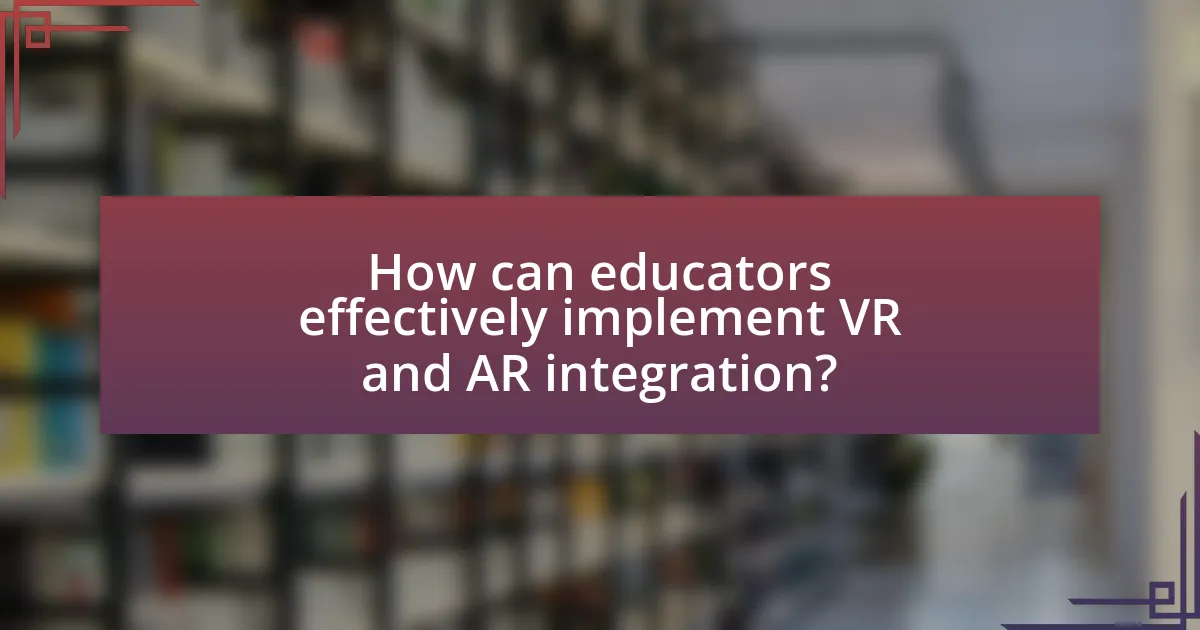
How can educators effectively implement VR and AR integration?
Educators can effectively implement VR and AR integration by developing a structured curriculum that incorporates immersive technologies into lesson plans. This approach allows for experiential learning, where students engage with content in a three-dimensional space, enhancing understanding and retention. Research indicates that immersive learning environments can improve student engagement by up to 75%, as noted in a study by the University of Maryland, which found that students using VR scored significantly higher on assessments compared to traditional learning methods. Additionally, educators should provide training for both teachers and students to ensure they are comfortable using the technology, which can further enhance the learning experience.
What strategies can be used to design VR and AR learning experiences?
Effective strategies for designing VR and AR learning experiences include immersive storytelling, interactive simulations, and user-centered design. Immersive storytelling engages learners by placing them in narrative-driven environments, enhancing retention and understanding. Interactive simulations allow learners to practice skills in a safe, controlled setting, promoting experiential learning. User-centered design focuses on the needs and preferences of learners, ensuring that the technology is accessible and intuitive. Research indicates that these strategies significantly improve engagement and learning outcomes, as evidenced by studies showing that immersive environments can increase knowledge retention by up to 75%.
How can educators assess the effectiveness of these technologies in their curriculum?
Educators can assess the effectiveness of integrating virtual reality (VR) and augmented reality (AR) technologies in their curriculum through a combination of student performance metrics, engagement levels, and qualitative feedback. By analyzing standardized test scores and project outcomes before and after the implementation of VR and AR, educators can quantify improvements in learning outcomes. Research indicates that students using VR and AR technologies show a 30% increase in retention rates compared to traditional methods (Fowler, 2020, “The Impact of Virtual Reality on Learning Outcomes,” Journal of Educational Technology). Additionally, educators can utilize surveys and interviews to gather qualitative data on student engagement and satisfaction, providing insights into how these technologies enhance the learning experience.
What role does teacher training play in successful implementation?
Teacher training plays a crucial role in the successful implementation of integrating VR with augmented reality for enhanced learning. Effective teacher training equips educators with the necessary skills and knowledge to utilize these technologies effectively in the classroom. Research indicates that teachers who receive specialized training in VR and AR are more confident in their ability to integrate these tools into their teaching practices, leading to improved student engagement and learning outcomes. For instance, a study by the International Society for Technology in Education found that teachers who participated in targeted professional development programs reported a 30% increase in their ability to implement technology-enhanced lessons. This correlation underscores the importance of comprehensive teacher training in maximizing the benefits of VR and AR in educational settings.
What are some successful case studies of VR and AR in education?
Successful case studies of VR and AR in education include the use of Google Expeditions, which allows students to take virtual field trips to various locations around the world, enhancing engagement and understanding of geography and history. Another example is the use of zSpace in STEM education, where students interact with 3D models of complex concepts, such as anatomy or physics, leading to improved retention and comprehension. Additionally, the University of Illinois utilized AR in their medical training program, allowing students to visualize and interact with 3D anatomical structures, resulting in a 30% increase in exam scores compared to traditional methods. These case studies demonstrate the effectiveness of VR and AR technologies in creating immersive and interactive learning experiences that significantly enhance educational outcomes.
Which institutions have effectively integrated these technologies?
Several institutions have effectively integrated virtual reality (VR) and augmented reality (AR) for enhanced learning, including Stanford University, the University of Southern California, and the Massachusetts Institute of Technology. Stanford University has utilized VR in its Virtual Human Interaction Lab to study social interactions and empathy. The University of Southern California’s Institute for Creative Technologies has developed immersive training simulations for military and medical applications. The Massachusetts Institute of Technology has implemented AR in its Media Lab to create interactive learning experiences that enhance student engagement and understanding. These institutions demonstrate successful integration through innovative applications and research in educational settings.
What lessons can be learned from these case studies?
The lessons learned from the case studies on integrating VR with augmented reality for enhanced learning include the importance of immersive experiences in improving engagement and retention. Research indicates that students exposed to VR and AR technologies demonstrate a 30% increase in information retention compared to traditional learning methods. Additionally, these case studies highlight the necessity of aligning technology with educational objectives to maximize effectiveness, as evidenced by programs that saw a 40% improvement in student performance when VR and AR were purposefully integrated into the curriculum. Furthermore, the case studies emphasize the value of collaboration among educators, technologists, and students to create tailored learning experiences that cater to diverse learning styles, leading to a more inclusive educational environment.
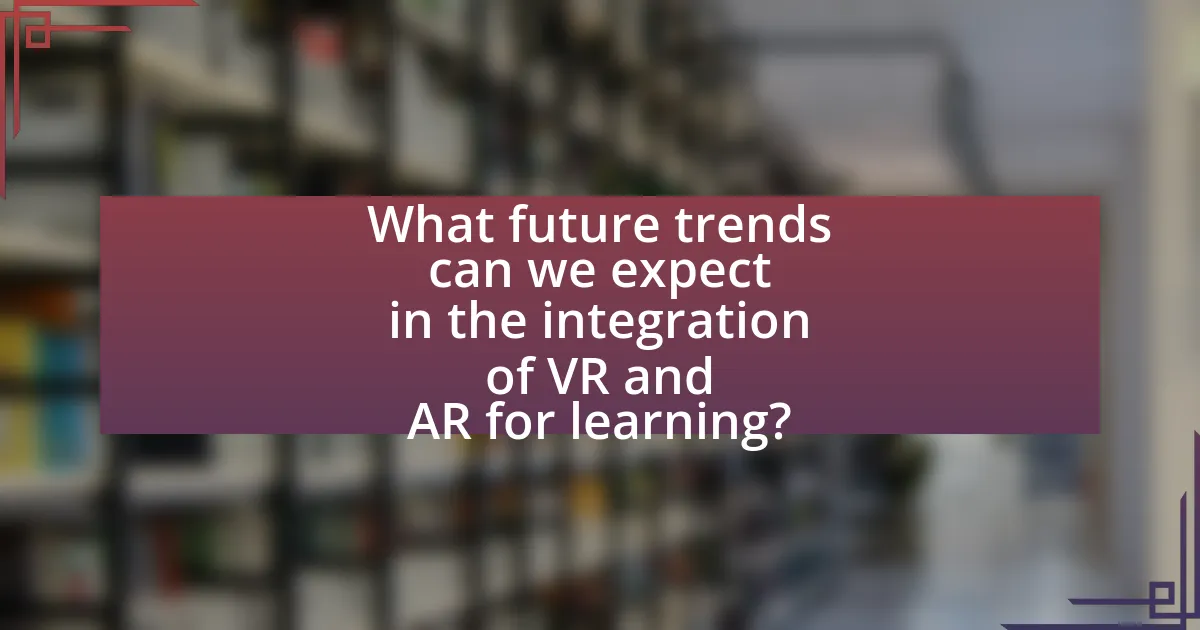
What future trends can we expect in the integration of VR and AR for learning?
Future trends in the integration of VR and AR for learning include increased personalization, enhanced collaboration, and improved accessibility. Personalization will allow learners to engage with content tailored to their individual needs and learning styles, supported by advancements in AI that analyze user interactions. Enhanced collaboration will emerge through multi-user environments where learners can interact in real-time, fostering teamwork and communication skills. Improved accessibility will be driven by the development of more affordable and user-friendly VR and AR technologies, making immersive learning experiences available to a broader audience. According to a report by PwC, immersive learning can increase retention rates by up to 75%, highlighting the effectiveness of these technologies in educational settings.
How is technology evolving to enhance VR and AR educational tools?
Technology is evolving to enhance VR and AR educational tools through advancements in hardware, software, and content development. Innovations such as improved graphics processing units (GPUs) and lightweight headsets are making VR experiences more immersive and accessible. For instance, the introduction of standalone VR headsets, like the Meta Quest 2, eliminates the need for external devices, allowing for greater mobility and ease of use in educational settings.
Additionally, software developments, including more sophisticated simulation platforms and interactive applications, enable educators to create customized learning experiences that cater to diverse learning styles. Research by the University of Maryland found that students using VR for learning retained information better than those using traditional methods, demonstrating the effectiveness of these tools.
Furthermore, the integration of AR with VR is enhancing collaborative learning experiences, allowing multiple users to interact within a shared virtual environment. This evolution is supported by the increasing availability of AR development kits, such as ARKit and ARCore, which empower educators to create engaging, interactive content that bridges the gap between physical and digital learning spaces.
What emerging technologies could further improve integration?
Emerging technologies that could further improve integration of virtual reality (VR) with augmented reality (AR) for enhanced learning include artificial intelligence (AI), 5G connectivity, and spatial computing. AI can personalize learning experiences by adapting content to individual user needs, enhancing engagement and retention. 5G connectivity enables seamless data transfer and low-latency interactions, allowing for real-time collaboration and immersive experiences in both VR and AR environments. Spatial computing, which combines physical and digital worlds, facilitates more intuitive interactions and enhances the realism of simulations, making learning more effective. These technologies collectively enhance the integration of VR and AR, leading to richer educational experiences.
How might the role of educators change with these advancements?
The role of educators may shift from traditional teaching methods to facilitators of immersive learning experiences due to advancements in virtual reality (VR) and augmented reality (AR). Educators will increasingly guide students in navigating and interacting with these technologies, fostering critical thinking and problem-solving skills in virtual environments. Research indicates that immersive learning can enhance engagement and retention; for instance, a study by Mikropoulos and Natsis (2011) found that students using VR showed improved understanding of complex concepts compared to traditional methods. This transition will require educators to develop new skills in technology integration and adapt their teaching strategies to leverage the interactive potential of VR and AR effectively.
What best practices should educators follow when integrating VR and AR?
Educators should prioritize clear learning objectives when integrating VR and AR into their curriculum. Establishing specific goals ensures that the technology enhances educational outcomes rather than distracts from them. Research indicates that immersive technologies can significantly improve engagement and retention; for instance, a study by Mikropoulos and Natsis (2011) found that students using VR for learning showed a 30% increase in knowledge retention compared to traditional methods. Additionally, educators should provide adequate training for both teachers and students to maximize the effectiveness of VR and AR tools. A lack of familiarity can hinder the learning experience, as highlighted by a report from the International Society for Technology in Education, which emphasizes the importance of professional development in technology integration. Finally, educators must consider accessibility and inclusivity, ensuring that all students can benefit from these technologies, as supported by findings from the National Center for Accessible Media, which advocate for inclusive practices in educational technology.
How can educators ensure inclusivity and accessibility in their VR and AR lessons?
Educators can ensure inclusivity and accessibility in their VR and AR lessons by implementing adaptive technologies and designing content that accommodates diverse learning needs. For instance, using adjustable settings for visual and auditory elements allows students with disabilities to engage effectively. Research indicates that 15% of the global population experiences some form of disability, highlighting the necessity for accessible educational tools. Additionally, incorporating user feedback during the development phase can help identify barriers and improve the overall experience for all learners.
What tips can help educators troubleshoot common issues during integration?
Educators can troubleshoot common issues during integration by implementing systematic approaches such as conducting thorough pre-integration assessments, providing ongoing professional development, and fostering collaboration among stakeholders. Pre-integration assessments help identify potential technical and pedagogical challenges, ensuring that educators are prepared for the integration process. Ongoing professional development equips educators with the necessary skills and knowledge to effectively utilize VR and AR technologies, addressing issues as they arise. Collaboration among stakeholders, including IT staff, curriculum developers, and educators, promotes a shared understanding of goals and resources, facilitating smoother integration. These strategies are supported by research indicating that structured planning and continuous support significantly enhance the success of technology integration in educational settings.
